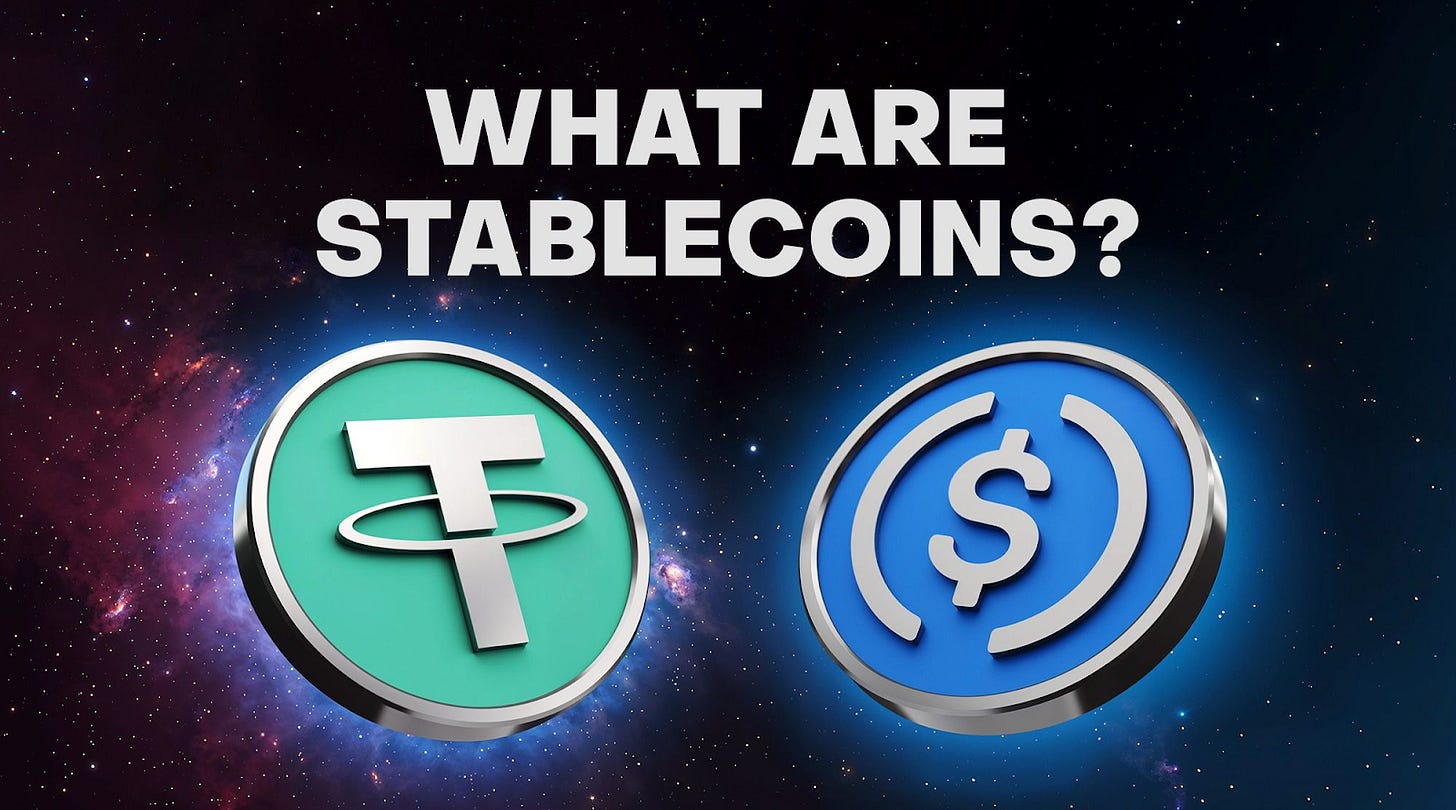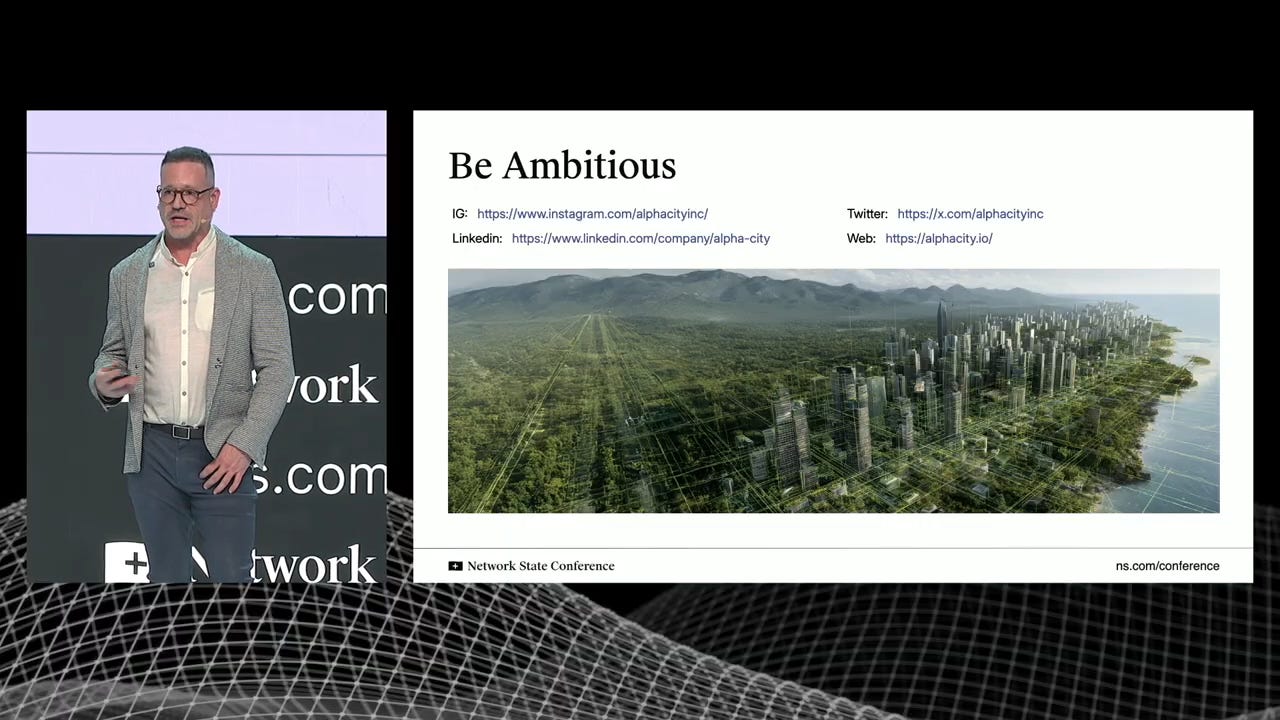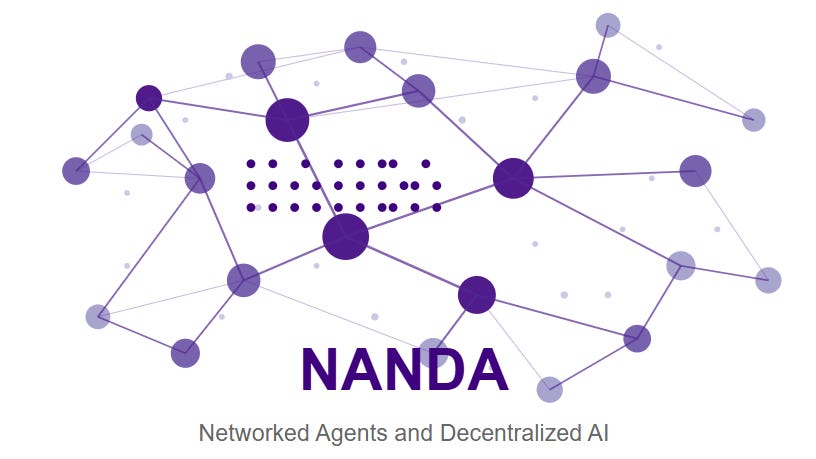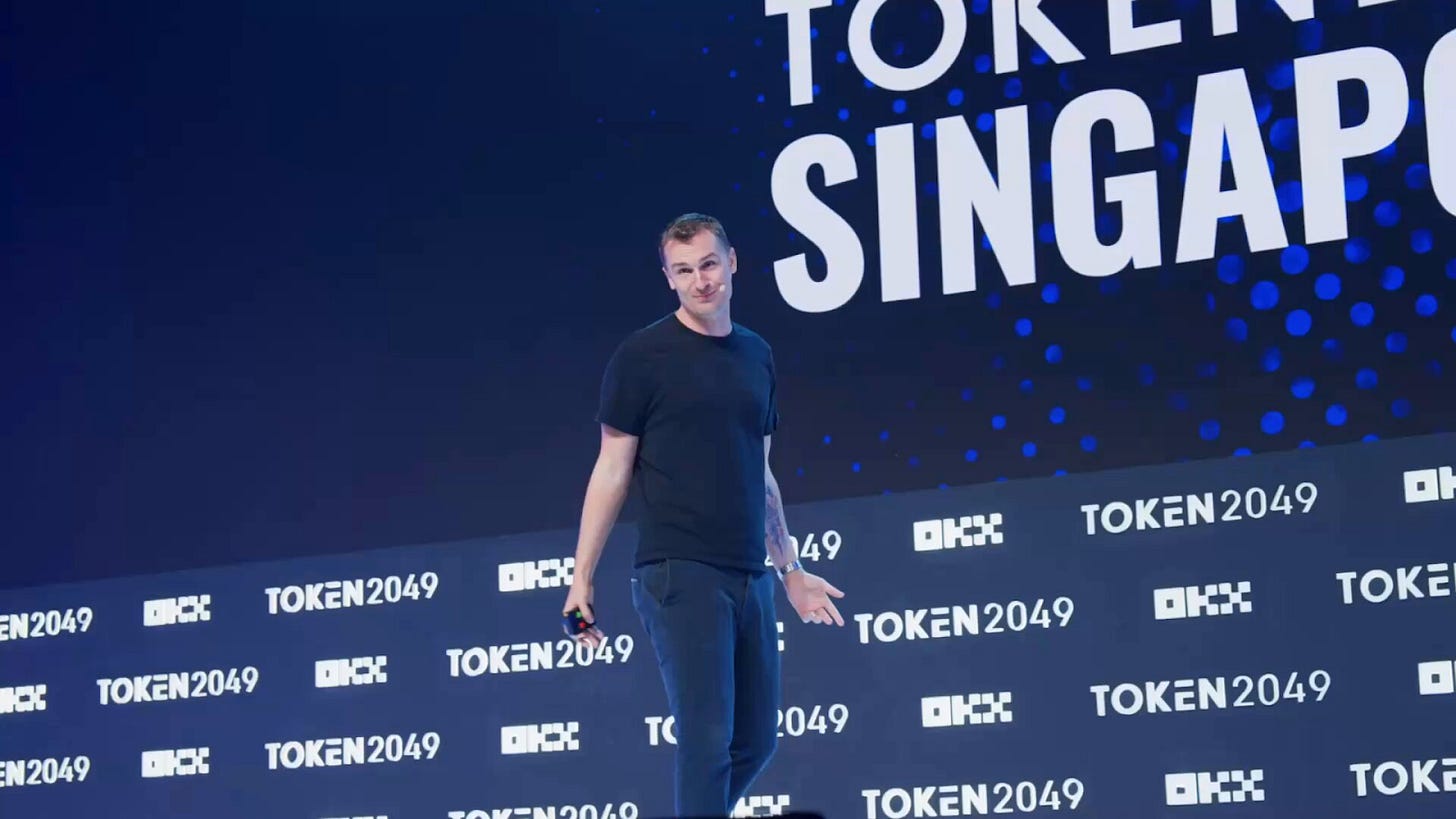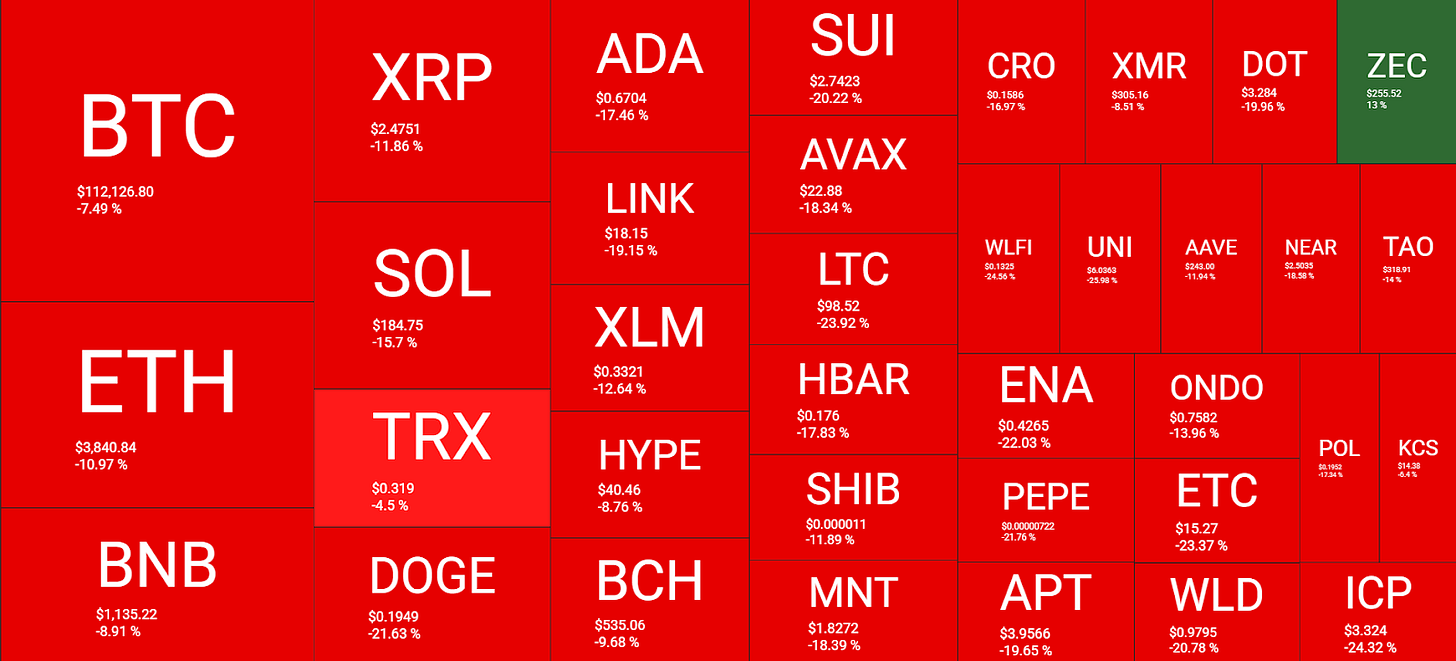Ipê News #8 - Stablecoins, Alpha City, Web of AIs, and more
Your weekly update on what is happening in the Startup Society ecosystem.
Hey builders!
Welcome to our 8th edition of the Ipê News.
Every week, we’ll explore the most compelling concepts and projects emerging in the Network State space, from new communities and cities to innovative governance protocols and parallel institutions.
Subscribe for free to receive it weekly in your inbox and join our Discord Server.
🏘️ Community Updates
Highlights from Ipê City, partner communities, or aligned initiatives.
Startup society docuseries premiere
The 2nd episode of the Network Society Docuseries, The Healthcare Blindspot, premiered 2 weeks ago in Singapore, with an amazing welcome and great feedback. Last week, Jean shared it again, this time with the crowd at the Network School, after a presentation on How to Run Your Popup City! After the Network State Conference, we now believe Popups are the new startups.
If you missed it, fear not, there will be more screenings, just keep an eye on the community. A preview is available for Architects and close members from the community. The first step is always to join our Town Hall, like the one tomorrow 🗓️ Eventually, expect episode 2 to be released on YouTube.
About Ipê Town Halls and Pulses, the schedule will change to be simply on the 2nd and 16th day of each month, easier than counting weeks. The OGs might remember it used to be like this, so now both are on a different day of the week every month.
🏫 Learning section
A learning segment to upskill and be able to build the tools of the future.
Stablecoins are all the rage
We hear about a new stablecoin every day, but what are they? A stablecoin is a token (usually ERC-20) pegged 1:1 to another asset, the most common being the US Dollar. How do you maintain the transactional value of a token? I’m glad you asked. There are 4 main ways.
The most common one is a Fiat-backed token, with USD reserves in cash. Simple and effective, but even though it’s crypto, it’s centralized. Examples are USDT and USDC.
A stablecoin can also be crypto-backed, which means the reserve is held in cryptocurrencies. Since it’s subject to volatility, it is usually overcollateralized. The main example here is DAI, maintained by Sky Labs (previously MakerDAO), which is overcollateralized at 150%.
However, some other projects tried to have an algorithmic peg, pairing with another token. This has proven very difficult in the case of high volatility, so stay away from this model if possible. The best example of this is the TerraUSD ($UST) paired with Luna, which collapsed in 2022.
But stablecoins don’t have to peg to the USD, you can also find pegs to gold, silver, and more. A good example of this is $PAXG, with a token backed by one fine troy ounce of a London Good Delivery gold bar. Expect to see more of these as the regulatory landscape gets more and more in favor of Web3.
No matter the model, stablecoins will play a critical role in Network Societies and the transition to a more decentralized world.
🌐 Network Societies Update
A quick pulse on emerging cities, nomad groups, and experiments shaping the future of network societies.
Be Ambitious: Alpha City
A model that isn’t discussed enough when building new cities is the one pushed by Alpha City, by the founders of Pronomos. They created a repeatable framework to build new cities, partnering with local governments. Their current focus is on African Portuguese-speaking countries, starting joint ventures with the governments.
They currently have four models operating in 8 countries. First is the Crypto City, a digital-first city, usually attractive to small islands with little else to offer than regulatory flexibility.
The 2nd one is AI Cities, targeting places with cheap energy for data centers and computing. They are also aiming at building AI Universities to support the local talent, fostering STEM education, and robotics.
The 3rd one is EV Cities, building the next giga-factories for Electric Vehicles in coastal cities with access to critical minerals required for semiconductors. Eventually, the full tech stack for EVs will be in one hub, allowing for fast and efficient manufacturing of EVs.
And finally, Aerospace Cities built near equatorial launch sites, leveraging the proximity of petrochemical bases and creating the first African end-to-end aerospace ecosystem.
For all of these projects, Alpha City is about to announce a lot more details soon, and they are looking for partners in every one of these industries, so keep an eye on their socials or get in touch. Be ambitious.
⚖️ Governance Tools
Exploring mechanisms for coordination, decision-making, and digital governance.
The internet of AIs
A lot of the future of Governance is about how to leverage AI and specifically LLMs to power decision-making in a decentralized way. But how do you achieve this when most models are developed by private companies?
This is where an MIT Media Lab project comes in with NANDA, the Network of AI Agents & Decentralized Internet. Building on progress from Anthropic’s Model Context Protocol (MCP) and Google’s Agent-to-Agent (A2A), Dr. Ramesh Raskar proposes a world where every company and every individual not only have a website, but everyone has their own AI agent.
Each agent can have its own Know Your Agent (KYA) identity, enabling trust and accountability between human-AI interactions without central authorities. We already saw multiple standards for AI-based governance; this time, MIT is offering an interoperable network of AIs that can negotiate, coordinate, and govern on behalf of their users.
The project is open-source, organizing regular hackathons, and you can watch a few videos explaining their vision of a World Wide Web of AI.
🛠️ Web3 Tools
Tech shaping decentralized living, finance, and identity.
Since the US passed a law about Stablecoins called the GENIUS Act (if you didn’t know, it stands for Guiding and Establishing National Innovation for U.S. Stablecoins Act), everyone is making a USD-pegged token. Base is going further.
In their Vision for 2025, they plan to release more than 25 local currency-based stablecoins. They currently have 12 stablecoins from different countries, recently adding the Singapore dollar and the Australian dollar to the list.
At Token2049, Jesse Pollak explained that adopting more local currencies will lead to more adoption and bring more people on-chain. The goal is to break down cross-border financial barriers and support the local sovereignty of every major country in the world. Can you see how tokenized Network States will benefit from this?
🌍 Other Interesting News
Broader movements and stories from the frontier of digital-first governance and societies.
Crypto crashes and treasuries
Last Friday, all markets crashed heavily, so what happened? After a long history of tariffs, Trump did it again, and the announcement triggered a wave of fear. Is this all there is to it? Clearly not.
Some traders started shorting the market before the announcement, clearly signaling insider knowledge, and created the biggest crypto liquidation event in the history of crypto (in USD terms). The move forced almost all exchanges into a liquidity crisis, and by a process called Auto-Deleveraging, wiped out more than a million traders at once.
Although probably criminal, no legal action was announced to identify the perpetrators. If you want a thorough investigation and timeline of the events, head here.
However, if you’re a Hodler, there is good news. Obviously, you can buy more (not financial advice!), but there are also over 200 US public companies that now have digital asset treasury (DAT) strategies, buying huge amounts of BTC & ETH (or even TON as we saw before).
Joe Lubin himself is starting a movement of ETH DATs, creating competition between treasuries, and promoting the business model of earning yields by staking, as the regulatory landscape becomes more favorable. DAT companies will likely accelerate the adoption of crypto globally.
💡 What is Ipê City?
A Techno-Optimist Community and Governance Lab
Ipê City is an innovative, techno-optimist community and social laboratory dedicated to exploring and experimenting with new ways of self-governing. It serves as a real-world testbed for decentralized and futuristic social models, blending technology, community, and governance in a unique way.
Reply to share your project, join the community, or let us know what you think
Join us:



